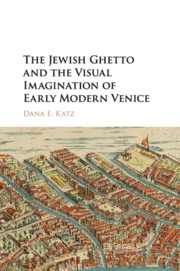
- Cited by 7
-
Cited byCrossref Citations
This Book has been cited by the following publications. This list is generated based on data provided by Crossref.
Rubin, Miri 2020. Cities of Strangers.
Facchini, Cristiana 2021. Geographies of Encounter. p. 113.
McFarland, Jennifer 2021. Ties That Unbind: Proximities,Pizzochere, and Women’s Social Options in Early Modern Venice. I Tatti Studies in the Italian Renaissance, Vol. 24, Issue. 2, p. 241.
Wilhelm, Mirjam E. 2021. Jewish Literatures and Cultures in Southeastern Europe. p. 197.
Ziolkowski, Saskia Elizabeth 2023. Italian ghetto stories: Toward a transnational literary history. Forum Italicum: A Journal of Italian Studies, Vol. 57, Issue. 2, p. 579.
Facchini, Cristiana 2023. Judaism and the City, Judaism in the City: A Historiographical Journey. Archiv für Religionsgeschichte, Vol. 25, Issue. 1, p. 153.
Terpstra, Nicholas 2024. Senses of Space in the Early Modern World.
- Publisher:
- Cambridge University Press
- Online publication date:
- August 2017
- Print publication year:
- 2017
- Online ISBN:
- 9781316691526
- Subjects:
- Art, Western Art


